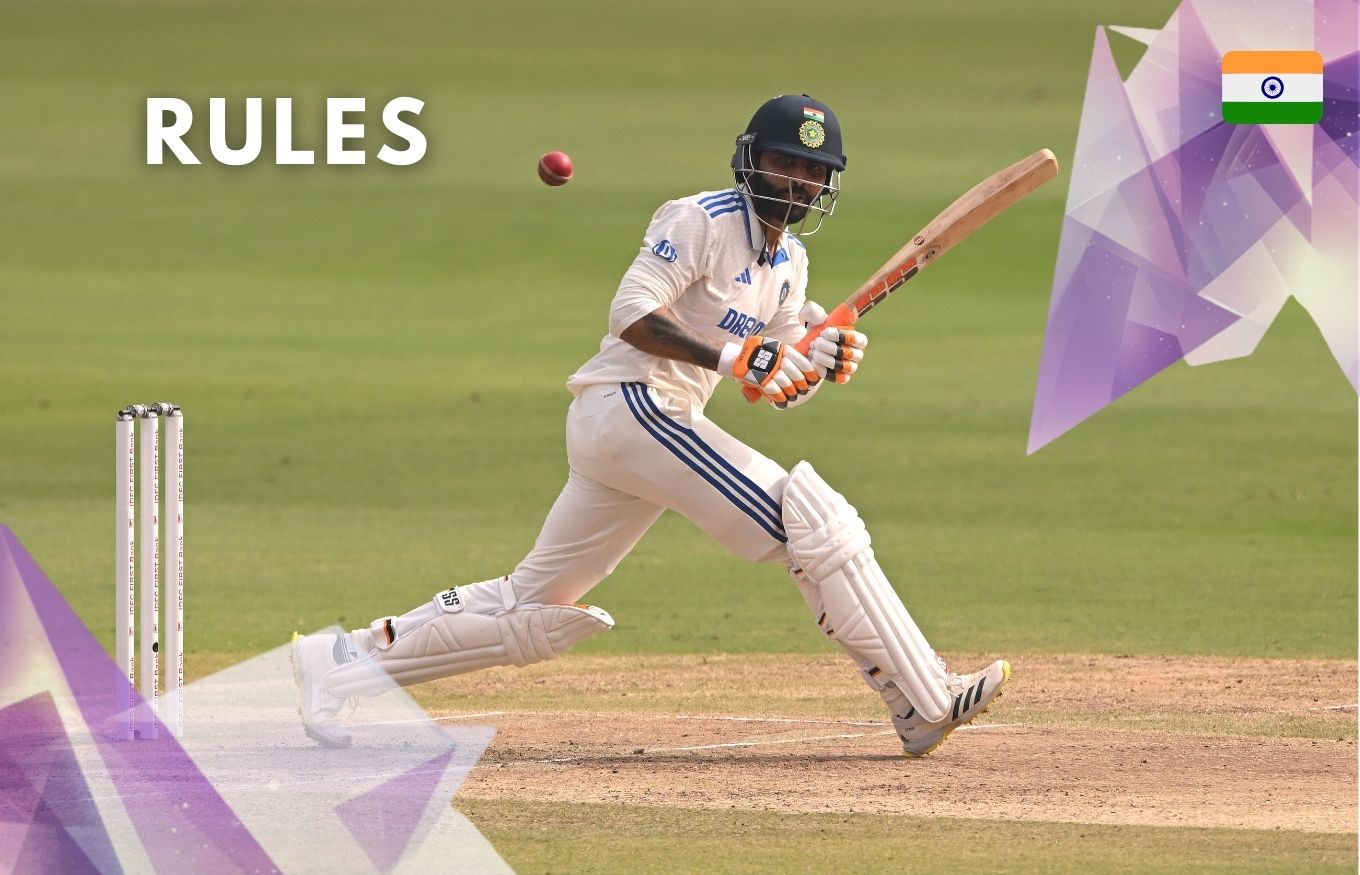Cricket is a globally loved sport with a rich history and complex rules. Understanding these rules is essential for players, fans, and even those interested in cricket betting. This article delves into the history of cricket, outlines the fundamental cricket rules, and discusses the various types of cricket tournaments.
History of Cricket
Cricket originated in England in the 16th century and has evolved significantly since then. The game became organized and sophisticated in the 18th century, leading to the formation of the Marylebone Cricket Club (MCC) in 1787. The MCC established the first set of cricket rules, which laid the foundation for the modern game.
Fundamental Cricket Rules
Understanding cricket game rules is crucial for enjoying and playing the game. Here’s a breakdown of the essential rules:
The Cricket Field

Pitch
The pitch is the central part of the cricket field where most of the action takes place. It is a rectangular area measuring 22 yards (20.12 meters) in length and 10 feet (3.05 meters) in width. The surface of the pitch can vary, affecting how the ball behaves when bowled. A well-maintained pitch is crucial for a fair contest between bat and ball.
Creases
There are four main creases on a cricket pitch:
- Bowling Crease: This line is drawn at each end of the pitch and runs parallel to the stumps. It marks the position from which the bowler delivers the ball.
- Popping Crease: This line is drawn in front of each set of stumps, 4 feet (1.22 meters) away from the bowling crease. It is the line a batsman needs to reach to avoid being run out.
- Return Crease: Two lines are drawn perpendicular to the bowling and popping creases, extending behind the stumps. They mark the area in which the bowler must remain while delivering the ball.
Players and Roles

Teams
Each cricket team consists of 11 players. A well-balanced team typically includes a mix of batsmen, bowlers, all-rounders, and a wicketkeeper. The team captain is responsible for making strategic decisions such as batting order, field placements, and bowling changes.
Roles
- Batsmen: Players who specialize in scoring runs. They come in various types, such as openers who start the innings, middle-order batsmen, and finishers who bat towards the end.
- Bowlers: Players who specialize in delivering the ball to dismiss batsmen. Bowlers can be fast bowlers, medium pacers, or spinners, depending on their bowling style.
- Wicket-Keeper: A specialist fielder who stands behind the stumps to catch the ball if the batsman misses it. The wicket-keeper plays a crucial role in catching, stumping, and providing support to the bowlers.
- Fielders: Players who assist in preventing runs and getting batsmen out by catching the ball, stopping it from reaching the boundary, and executing run-outs.
Scoring Runs
- Runs. Batsmen score runs by running between the wickets after hitting the ball. Each successful run involves both batsmen crossing to the opposite end of the pitch. The team’s total score increases with each run completed.
Boundaries
- Four Runs: If the ball hits the ground before crossing the boundary, the batting team is awarded four runs.
- Six Runs: If the ball crosses the boundary without touching the ground, the batting team is awarded six runs. This is considered a significant achievement for the batsman.
Dismissals
- Bowled. A batsman is out-bowled if the bowler’s delivery hits the stumps, dislodging the bails. This dismissal demonstrates the bowler’s skill in delivering a ball that the batsman cannot defend.
- Caught. A batsman is caught if a fielder catches the ball on the full after the batsman hits it with their bat. This requires quick reflexes and good positioning from the fielders.
- LBW (Leg Before Wicket). A batsman is out LBW if they are struck on the pads by the ball in line with the stumps, and the umpire believes the ball would have hit the stumps had it not been intercepted by the batsman’s leg. This rule prevents batsmen from using their legs to block the ball from hitting the stumps.
- Run Out. A batsman is run out if a fielder hits the stumps with the ball before the batsman completes a run. This requires excellent fielding and awareness from the fielding team.
The Match
- Innings. A cricket match is divided into innings, where one team bats while the other bowls and fields. In Test matches, each team typically has two innings, while in limited-overs cricket (ODIs and T20s), each team has one innings.
- Overs. An over consists of six legal deliveries bowled by a single bowler. After each over, a different bowler delivers the next over from the opposite end of the pitch. The number of overs per inning depends on the format of the game. For example, ODIs have 50 overs per inning, while T20 matches have 20 overs per inning.
Types of Cricket Tournaments
Cricket tournaments vary in format, each with unique rules and styles of play. Here are the main types:
| Format | Duration | Innings | Key Feature |
| Test Matches | Up to five days | Each team bats twice | Emphasizes endurance and strategy |
| One Day Internationals (ODIs) | One day | Each team plays 50 overs | Balances strategy with quick scoring |
| Twenty20 (T20) | Approximately three hours | Each team plays 20 overs | Fast-paced and entertaining |
| T10 Cricket | About 90 minutes | Each team plays 10 overs | Ultra-fast and highly entertaining |
Important Tournaments of Cricket
All cricket tournaments are not considered to be important. However, these are few of the best cricket tournaments.
| Tournament | Format | Frequency | Significance |
| ICC Cricket World Cup | ODI | Every four years | The most prestigious tournament in cricket |
| ICC T20 World Cup | T20 | Every two years | Celebrates the shortest format of the game |
| The Ashes | Test | Every two years | Historic rivalry between England and Australia |
| Indian Premier League (IPL) | T20 | Annually | Combines cricket with entertainment and big money |
Cricket Betting
Cricket betting has grown with the popularity of the sport. Fans place bets on various aspects, such as match outcomes, individual performances, and specific events within the game. It’s important to understand the cricket rules and the dynamics of different tournaments to make informed bets.
Cricket is a multifaceted game with a deep history and intricate rules. Whether you are watching a match, playing the game, or participating in cricket betting, understanding these cricket rules enhances your experience. With diverse formats and prestigious tournaments, cricket continues to captivate audiences worldwide.

